Australia’s current housing shortage is frequently attributed to high population growth rates. But is this growth a recent situation, or has Australia always experienced high population growth? Understanding the drivers behind our population trends will help to clarify the situation now, but also what we can expect in the future and the impact of this growth on the housing market.
Historical Growth Patterns
For the past 70 years, Australia has consistently maintained higher population growth rates than the OECD average. The Organisation for Economic Co-operation and Development (OECD) comprises 38 developed nations, many of which are popular migration destinations, yet Australia has historically outpaced nearly all of them in growth rate.
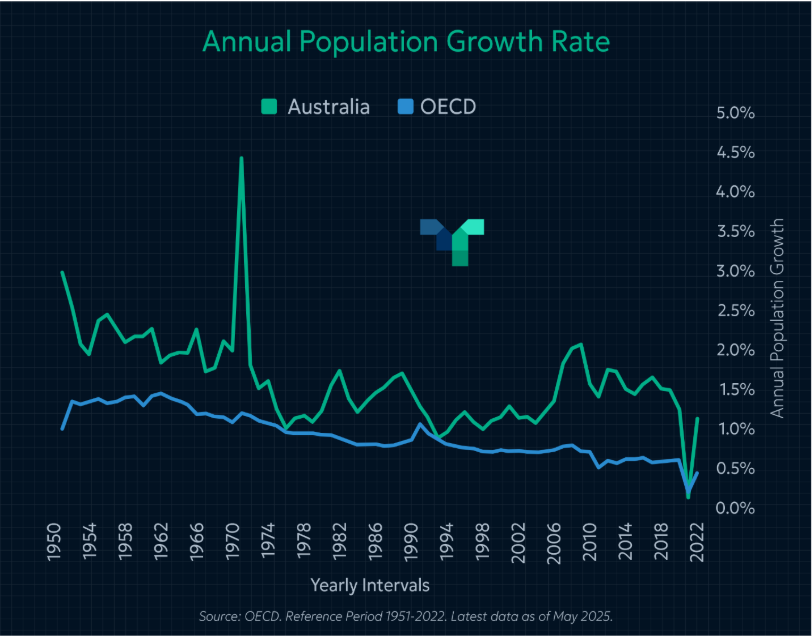
A significant spike occurred around the 1970s resulting from major immigration policy reforms that opened Australia to more migrants. After this initial surge, population growth rates eventually returned to normal levels for Australia, but these “normal” levels have consistently exceeded those of most developed countries.
Current Population Trends
Looking at more recent years, Australia is experiencing record levels of population growth. This follows a period of minimal population change during pandemic border closures, making the current resurgence particularly notable.
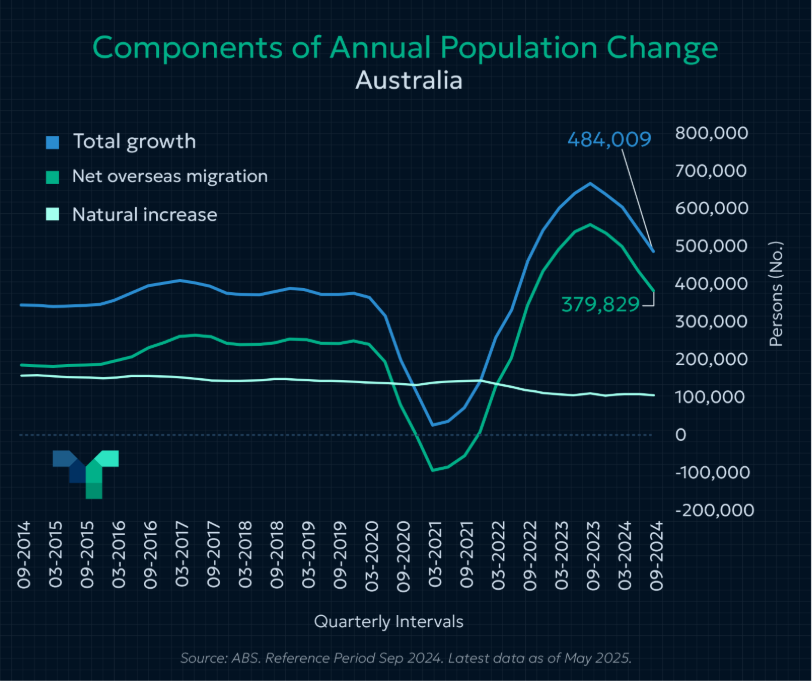
The most recent data as of May 2025 reveals:
- A population increase of approximately 380,000 people from overseas migration
- Overseas migration now accounts for over 80% of Australia’s total population increase
- Post-pandemic growth rates are at unprecedented levels
Future Population Projections
The 40-year forecast indicates Australia will continue experiencing relatively high population growth, primarily driven by net overseas migration. Current record migration levels are projected to gradually decrease to around 225,000 new residents annually.
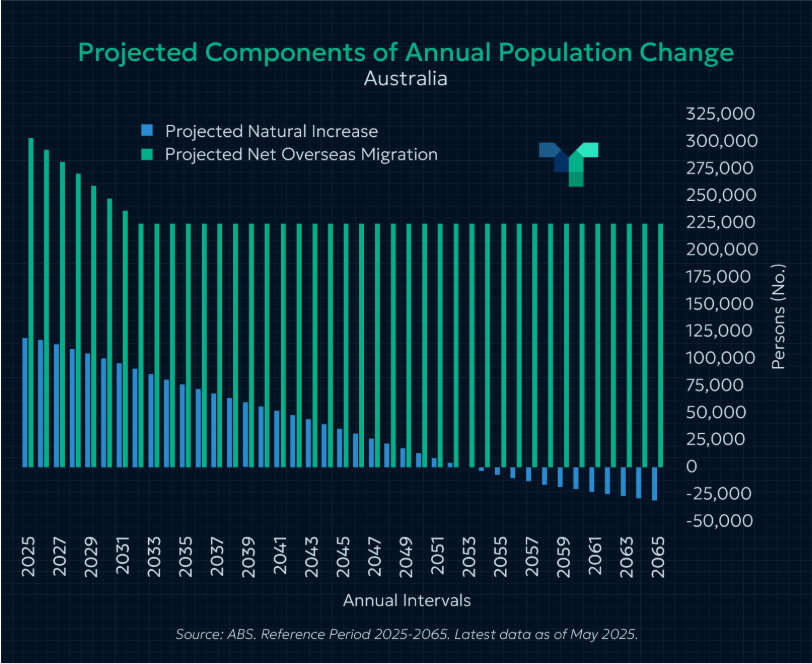
Particularly significant is the trend for natural increase (births minus deaths), which shows a clear downward trajectory as Australian fertility rates decline. By approximately 2050, our natural population change will turn negative, meaning without migration, Australia’s population would begin shrinking.
Global Growth Comparisons
When comparing these forecasts globally, Australia ranks second in projected growth among OECD countries, behind only Israel.
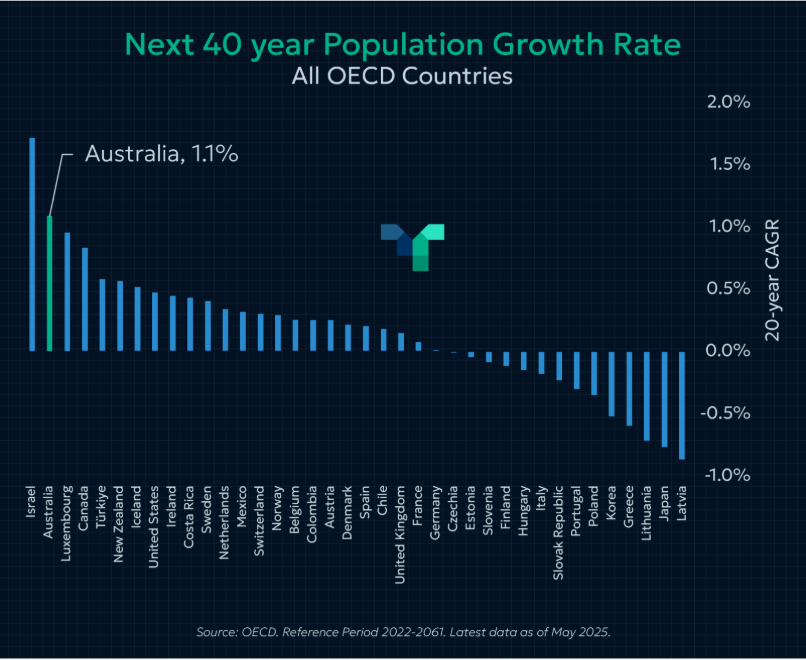
However, there’s a fundamental difference between these two high population growth countries:
- Israel’s population growth stems primarily from natural increase due to its high fertility rate of 2.9 children per family
- Australia’s fertility rate has fallen to a record low of just 1.5 children per family
While Australia’s growth is overwhelmingly migration-driven, it still remains one of the fastest-growing developed nations globally. Population projections indicate Australia will reach approximately 38 million people by 2065—about 10 million more than our current population as of May 2025.
What’s Driving Migration to Australia?
To understand why Australia attracts such high migration levels, examining high-net-worth migrant patterns provides valuable insights. In 2023, Australia ranked as the number one destination globally for millionaire migration. In fact, Australia has held this position for 6 of the past 10 years, competing primarily with the UAE.
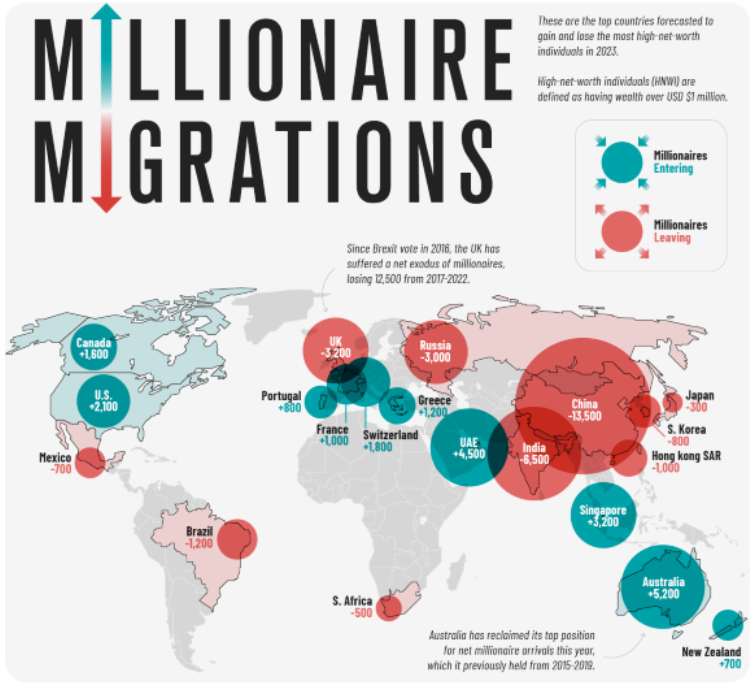
Countries with strong millionaire migration inflows share several common factors:
- Mature healthcare systems
- Stable economies
- High quality of life relative to migrants’ countries of origin
Australia possesses a unique additional advantage identified in recent research: our combination of abundant natural resources and relatively low population density. These inherent geographic advantages suggest Australia will remain one of the world’s most desirable migration destinations for decades to come.
Summary:
- Australia has historically maintained higher population growth than most OECD countries for over 70 years
- Current growth is at record levels, with overseas migration accounting for over 80% of population increases
- Australia’s fertility rate has declined to 1.5 children per family, with natural population change projected to become negative by 2050
- Population forecasts suggest Australia will reach 38 million people by 2065, adding approximately 10 million to our current population – driven by high overseas migration inflow
- Australia’s unique combination of stable economy, quality healthcare, high living standards, abundant resources and low population density will likely maintain its global position as a top-two migration destination.






